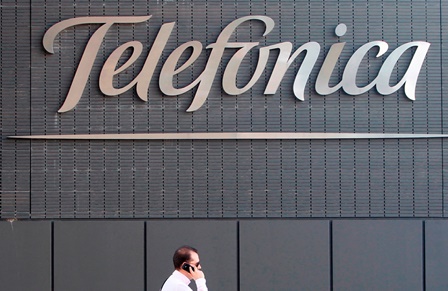
Telefónica and Nokia claim symmetrical 10 Gbps speeds from latest PON FTTH platform with expected support for 5G mobile backhaul and traffic aggregation.
Telefónica said it completed a successful trial for its planned “5G” network using Nokia’s XGS passive optical network fiber-to-the-home technology.
The XGS-PON lab trial showed four times more upstream bandwidth than XG-PON1, demonstrating how the technology is especially suited for 5G, where it can be used for mobile backhaul as well as the aggregation of remote access node traffic.
Francisco Javier Fabián, Fixed Access and Real State Director at Telefonica, said: “New services, competition and future symmetrical ultra broadband access require enhanced fixed access technology. We are sure that XGS-PON is the correct choice to fulfill demands for gigabit bandwidth and will support the higher symmetric bandwidth required to support 5G backhaul in the future.”
Federico Guillen, president of Nokia’s Fixed Networks business group, said: “Streaming services, gaming and HD video continue to drive demand for gigabit services, and the use of next-generation fiber technologies like XGS-PON will play a critical role in Telefonica’s ability to deliver these enhanced services to customers – by wireless or fixed networks. The enhancements to our next-generation PON portfolio make it easier and more cost-effective for service providers to seamlessly evolve their existing fiber networks in line with demand.”
Telefónica has been active in the 5G space, having signed network partnership agreements with a handful of vendors, including Ericsson, Nokia, Huawei and ZTE.
For Nokia, the latest trial builds on its work in the 5G space. The vendor has scored work with a number of carriers, including U.S. Cellular, Bell Canada, AT&T, Verizon Communications, Sprint and T-Mobile US. Many of those trials have included millimeter wave spectrum, which is seen as key to next-generation network deployments.
Nokia recently stated it had conducted the first demonstration of a 5G network running on commercial platforms, which used the vendor’s AirScale Radio Access technology and Cloud Packet Core running on an AirFrame data center platform.
A number of telecom operators have announced plans to begin commercial trials of 5G systems next year, despite the fact standards are not expected to be ratified until early 2018. These prestandard deployments are set to focus on mobile broadband use cases, which typically will not require a significant amount of interoperability between various operator deployments.



